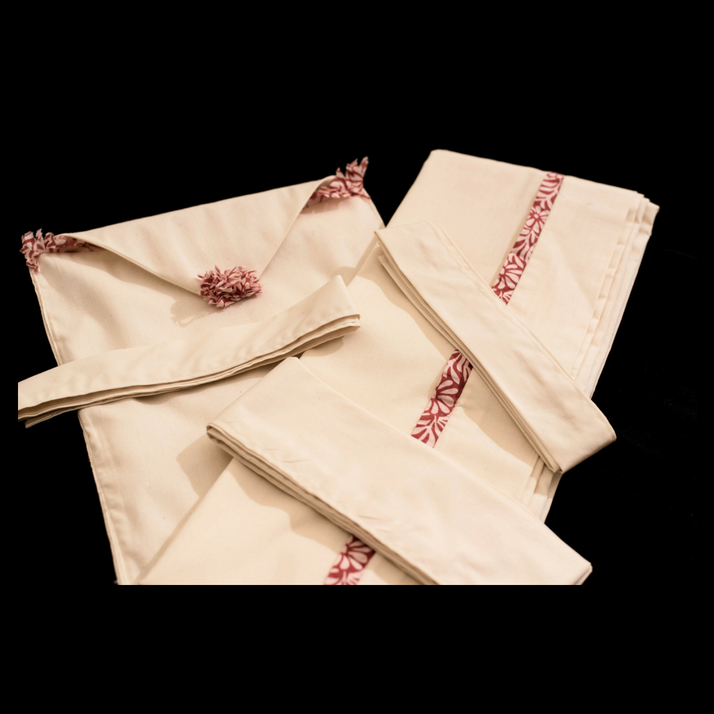
Men may also be wrapped in a kittel, a simple, white ceremonial jacket that some Jews wear on Yom Kippur, at the Passover seder, and under the wedding canopy. Regardless of gender, they include shirt, pants, a head covering, and a belt. Tachrichim come packaged in sets for men and women. There is little difference in appearance or cost between them the funeral home may or may not offer a choice. Tachrichim come in muslin or linen, fabrics that recall the garments of the ancient Hebrew priesthood. They are made without buttons, zippers, or fasteners. Shrouds are white and entirely hand-stitched. In every generation, these garments reaffirmed a fundamental belief in human equality. Since shrouds have no pockets, wealth or status cannot be expressed or acknowledged in death. The universal use of shrouds protected the poor from embarrassment at not being able to afford lavish burial clothes. The custom - which set both a decorous minimum and a limit on ostentation - has been followed by observant Jews ever since: “Whoever heaps elaborate shrouds upon the dead transgresses the injunction against wanton destruction.

Their use dates back to Rabbi Simeon ben Gamliel II, who, in the second century of the Common Era, asked to be buried in inexpensive linen garments. The traditional clothing for burying the dead are tachrichim, simple white shrouds.

#Funeral shroud how to
My Jewish Learning is a not-for-profit and relies on your help DonateĮxcerpted with permission from Saying Kaddish: How to Comfort the Dying, Bury the Dead, & Mourn as a Jew ( Schocken Books ).


 0 kommentar(er)
0 kommentar(er)
